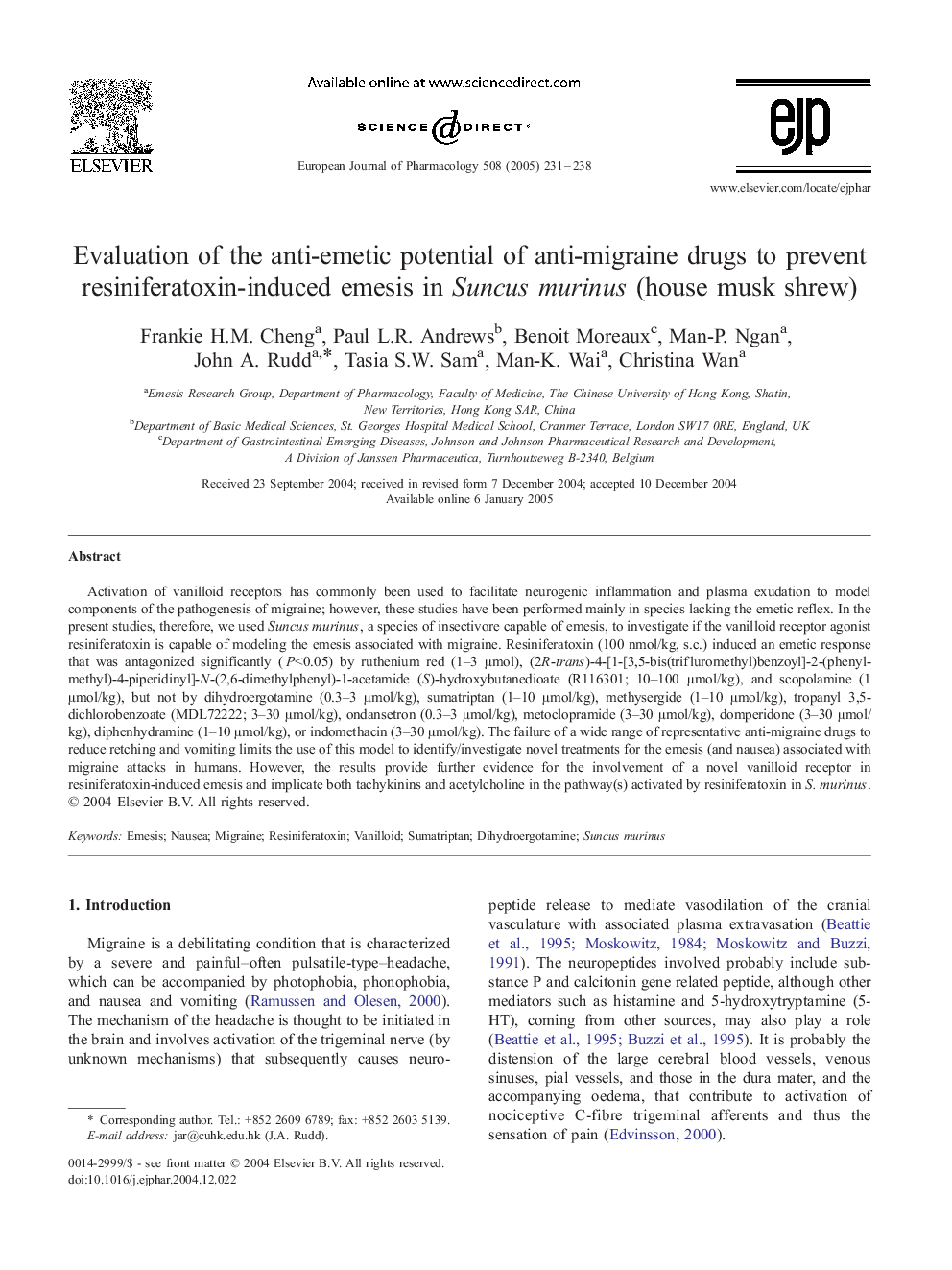| Article ID | Journal | Published Year | Pages | File Type |
|---|---|---|---|---|
| 9921542 | European Journal of Pharmacology | 2005 | 8 Pages |
Abstract
Activation of vanilloid receptors has commonly been used to facilitate neurogenic inflammation and plasma exudation to model components of the pathogenesis of migraine; however, these studies have been performed mainly in species lacking the emetic reflex. In the present studies, therefore, we used Suncus murinus, a species of insectivore capable of emesis, to investigate if the vanilloid receptor agonist resiniferatoxin is capable of modeling the emesis associated with migraine. Resiniferatoxin (100 nmol/kg, s.c.) induced an emetic response that was antagonized significantly (P<0.05) by ruthenium red (1-3 μmol), (2R-trans)-4-[1-[3,5-bis(trifluromethyl)benzoyl]-2-(phenylmethyl)-4-piperidinyl]-N-(2,6-dimethylphenyl)-1-acetamide (S)-hydroxybutanedioate (R116301; 10-100 μmol/kg), and scopolamine (1 μmol/kg), but not by dihydroergotamine (0.3-3 μmol/kg), sumatriptan (1-10 μmol/kg), methysergide (1-10 μmol/kg), tropanyl 3,5-dichlorobenzoate (MDL72222; 3-30 μmol/kg), ondansetron (0.3-3 μmol/kg), metoclopramide (3-30 μmol/kg), domperidone (3-30 μmol/kg), diphenhydramine (1-10 μmol/kg), or indomethacin (3-30 μmol/kg). The failure of a wide range of representative anti-migraine drugs to reduce retching and vomiting limits the use of this model to identify/investigate novel treatments for the emesis (and nausea) associated with migraine attacks in humans. However, the results provide further evidence for the involvement of a novel vanilloid receptor in resiniferatoxin-induced emesis and implicate both tachykinins and acetylcholine in the pathway(s) activated by resiniferatoxin in S. murinus.
Related Topics
Life Sciences
Neuroscience
Cellular and Molecular Neuroscience
Authors
Frankie H.M. Cheng, Paul L.R. Andrews, Benoit Moreaux, Man-P. Ngan, John A. Rudd, Tasia S.W. Sam, Man-K. Wai, Christina Wan,
